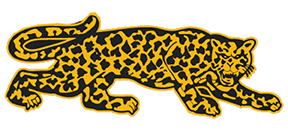Hello and welcome to my class page!!!!!!!

I am excited to be starting my 4th year at NTXCA North Campus as the Middle School Math Teacher.
I am the proud parent of 3 children and grandmother to 5 wonderful grandkids. I have been married to my great husband for 27 years.
I have a Bachelor of Science degree in Mathematics from Texas Woman's University. I also have a Masters degree in Curriculum and Instruction in Mathematic Teaching from the University of Texas at Arlington.
What are the 5th Graders learning the 6th six weeks?
As we prepare for the STAAR test, students are reviewing important math concepts that connect directly to real life. Here's a breakdown of what we’re working on in class:
🔺 5.5A – Classifying Two-Dimensional Figures
Students learn how to group shapes (like triangles, quadrilaterals, and other polygons) based on their sides, angles, and other properties using graphic organizers like Venn diagrams or classification trees.
🧩 Real-life connection: Organizing objects based on shapes—like sorting puzzle pieces, signs, or picture frames.
📉 5.8C – Graphing Ordered Pairs in the First Quadrant
Students practice plotting points (x, y) on a coordinate grid using values from patterns, tables, or real-world scenarios.
🧩 Real-life connection: Reading a map or graphing how a plant grows over time.
📊 5.9C – Solving Problems with Data
Students solve one- and two-step problems using information from bar graphs, dot plots, frequency tables, stem-and-leaf plots, and scatterplots.
🧩 Real-life connection: Interpreting survey results, sports stats, or school data to make decisions.
🔢 5.2C – Rounding Decimals
Students round decimals to the nearest tenth or hundredth, which helps with estimating and making calculations quicker and easier.
🧩 Real-life connection: Rounding prices while shopping to estimate totals.
🧮 5.4A – Identifying Prime and Composite Numbers
Students determine whether numbers are prime (only divisible by 1 and itself) or composite (has more than two factors).
🧩 Real-life connection: Great for understanding how to break down numbers or design number patterns in games and puzzles.
💵 5.10A – Understanding Taxes
Students learn to define four types of taxes:
Income tax (taken from your paycheck)
Payroll tax (covers Social Security & Medicare)
Sales tax (added when buying items)
Property tax (paid on homes or land)
🧩 Real-life connection: Understanding why the amount we pay at checkout is more than the sticker price.
💰 5.10B – Gross vs. Net Income
Students learn the difference between:
Gross income – total money earned
Net income – what’s left after taxes and deductions
🧩 Real-life connection: Recognizing why a paycheck shows less than the full salary.
✅ How Parents Can Help:
Let your child explain their thinking when solving math problems.
Discuss real-world applications (like reading receipts, checking pay stubs, or analyzing sports scores).
Practice plotting and interpreting data on graphs together.
What are the 6th Graders learning the 6th six weeks?
As we prepare for the STAAR test, your child will be revisiting key concepts from throughout the year. These skills are essential for both math success and real-life problem solving. Here’s a breakdown of what we’re reviewing and how you can support your child:
➕ 1. Equivalent Numerical Expressions & Order of Operations (TEKS 6.7A)
Students are learning how to simplify expressions using the correct order of operations (PEMDAS) and apply whole number exponents (like 232^323) and prime factorization.
🔑 Why it matters: These skills help students understand how numbers work and prepare them for algebra.
🏠 How to help: Practice simplifying expressions together like:
3+22×(4−1)3 + 2^2 \times (4 - 1)3+22×(4−1)
🔁 2. Properties of Operations (TEKS 6.7D)
We review how math properties like commutative, associative, identity, inverse, and distributive help simplify and rearrange expressions.
🔑 Why it matters: These help students manipulate numbers and expressions confidently.
🏠 How to help: Let your child explain how to simplify an expression like
3(x+4)3(x + 4)3(x+4)
using the distributive property.
📐 3. Area & Volume (TEKS 6.8D)
We calculate the area of rectangles, parallelograms, trapezoids, and triangles, and the volume of right rectangular prisms using rational number dimensions (fractions and decimals).
🔑 Why it matters: These are practical skills used in building, design, and problem-solving.
🏠 How to help: Ask your child to find the area of a triangular garden or the volume of a box using real dimensions at home.
➗ 4. One-Step Equations and Inequalities (TEKS 6.10A)
We model and solve one-step algebraic equations and inequalities like
x+5=12orx−3<10x + 5 = 12 \quad \text{or} \quad x - 3 < 10x+5=12orx−3<10
🔑 Why it matters: This is foundational for algebra and real-world problem solving.
🏠 How to help: Challenge your child with simple "mystery number" problems like:
“I added 7 to a number and got 15. What was my number?”
📉 5. Graphing in Four Quadrants (TEKS 6.11A)
Students graph positive and negative rational numbers (fractions and decimals) in all four quadrants of the coordinate plane.
🔑 Why it matters: Graphing is essential for geometry, algebra, and data analysis.
🏠 How to help: Practice plotting points like (–2, 3) or (1.5, –4) on graph paper together.
📏 6. Converting Units (TEKS 6.4H)
We convert between units in the same system (like inches to feet or minutes to hours) using ratios, proportions, or unit rates.
🔑 Why it matters: This is used in everyday tasks like cooking, shopping, or travel.
🏠 How to help: Ask questions like: “If 1 ft = 12 in, how many inches are in 3.5 ft?”
🧩 How You Can Support Review at Home:
✅ Encourage your child to explain their thinking out loud.
✅ Use real-world math: recipes, budgets, measurements, and time.
✅ Play games involving logic and reasoning (like Sudoku or logic puzzles).
✅ Use flashcards or quiz apps for review.
What are the 7th Graders learning the 6th six weeks?
As students get ready for the STAAR test, we're revisiting key concepts that mix math skills with real-world thinking. Here's a breakdown of the topics we’re reviewing in class:
🧮 7.3B – Operations with Rational Numbers
Students are applying their understanding of adding, subtracting, multiplying, and dividing rational numbers (positive and negative numbers, decimals, and fractions).
🧩 Real-life connection: Balancing a budget, comparing temperatures, or calculating scores in games.
🟦 7.9C – Area of Composite Figures
Students learn how to break down complex shapes (made of rectangles, triangles, circles, trapezoids, etc.) and calculate the total area.
🧩 Real-life connection: Finding how much carpet is needed for a room with odd shapes or planning how much paint is needed for a mural.
🔁 7.9B – Circumference and Area of Circles
Students find the distance around a circle (circumference) and the space inside (area) using formulas with π (pi).
🧩 Real-life connection: Measuring around a circular garden or how much space a circular rug covers.
🔗 7.11A – Two-Step Equations and Inequalities
Students solve problems using one-variable equations and inequalities that require two steps to find the solution (like dividing then subtracting).
🧩 Real-life connection: Figuring out how many chores to do to earn enough money for something or solving puzzles involving limits.
📊 7.12A – Comparing Data with Dot Plots & Box Plots
Students compare two sets of data using visuals like dot plots and box plots, focusing on:
Shape (is it spread out or clustered?)
Center (what’s typical or average?)
Spread (how much does it vary?)
🧩 Real-life connection: Comparing test scores or sports stats between two teams or classes.
🔺 7.11C – Geometry Equations with Angles
Students solve problems involving the sum of angles in a triangle and other angle relationships (like vertical angles, supplementary, complementary).
🧩 Real-life connection: Design, construction, or creating blueprints where accurate angles are needed.
✅ How Parents Can Help:
Review math vocabulary like "composite figures," "rational numbers," or "box plots."
Ask your child to explain how they solved a problem—this helps reinforce learning.
Connect concepts to everyday life (ex: baking, sports, budgeting).
What are the 8th Graders learning the 6th six weeks?
As we prepare for the STAAR test, we’re reviewing important concepts that blend algebra, geometry, and financial literacy. These are skills students will use in high school and beyond! Here’s what we’re focusing on:
🧱 8.7C – The Pythagorean Theorem
Students are using the Pythagorean Theorem (a² + b² = c²) to solve problems involving right triangles, including finding distances between points on the coordinate plane.
They’re also using the converse to determine if a triangle is a right triangle.
🧩 Real-life connection: Finding the shortest path between two points or checking if something is truly “square.”
➕ 8.8A & 8.8C – Solving Equations with Variables on Both Sides
Students write and solve one-variable equations and inequalities that include variables on both sides and use rational numbers (fractions, decimals, integers).
🧩 Real-life connection: Comparing two pricing plans, budgets, or salaries to figure out which is better in the long run.
🔄 8.10C – Transformations on the Coordinate Plane
Students explore how shapes change when moved, flipped, or rotated:
Translations (slides)
Reflections (flips)
Rotations (turns)
They also use algebraic rules to describe these transformations.
🧩 Real-life connection: Graphic design, animation, or building symmetrical objects.
💰 8.12D – Simple vs. Compound Interest
Students learn how to calculate and compare simple and compound interest, helping them understand how savings or debt can grow over time.
🧩 Real-life connection: Understanding how interest works on a savings account or a credit card.
📈 8.5B – Representing Linear Non-Proportional Relationships
Students explore linear equations in the form y = mx + b, where b ≠ 0, meaning there is a starting value that isn’t zero. They use tables, graphs, and equations to model these situations.
🧩 Real-life connection: Tracking a phone plan with a flat monthly fee plus usage charges.
✅ How Parents Can Support at Home:
Encourage your child to explain how they solved a problem.
Review key formulas (like the Pythagorean Theorem or interest formulas).
Talk about how math shows up in your daily routines—budgeting, measuring, planning.
